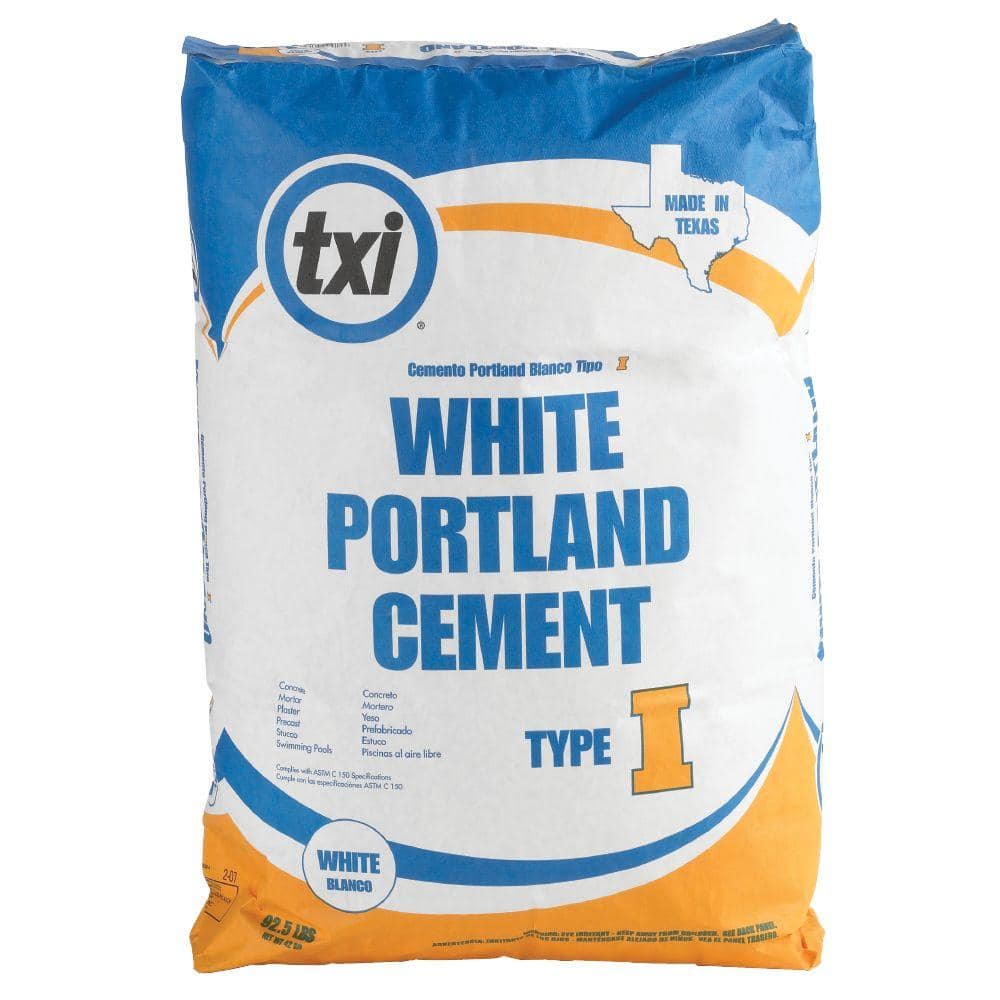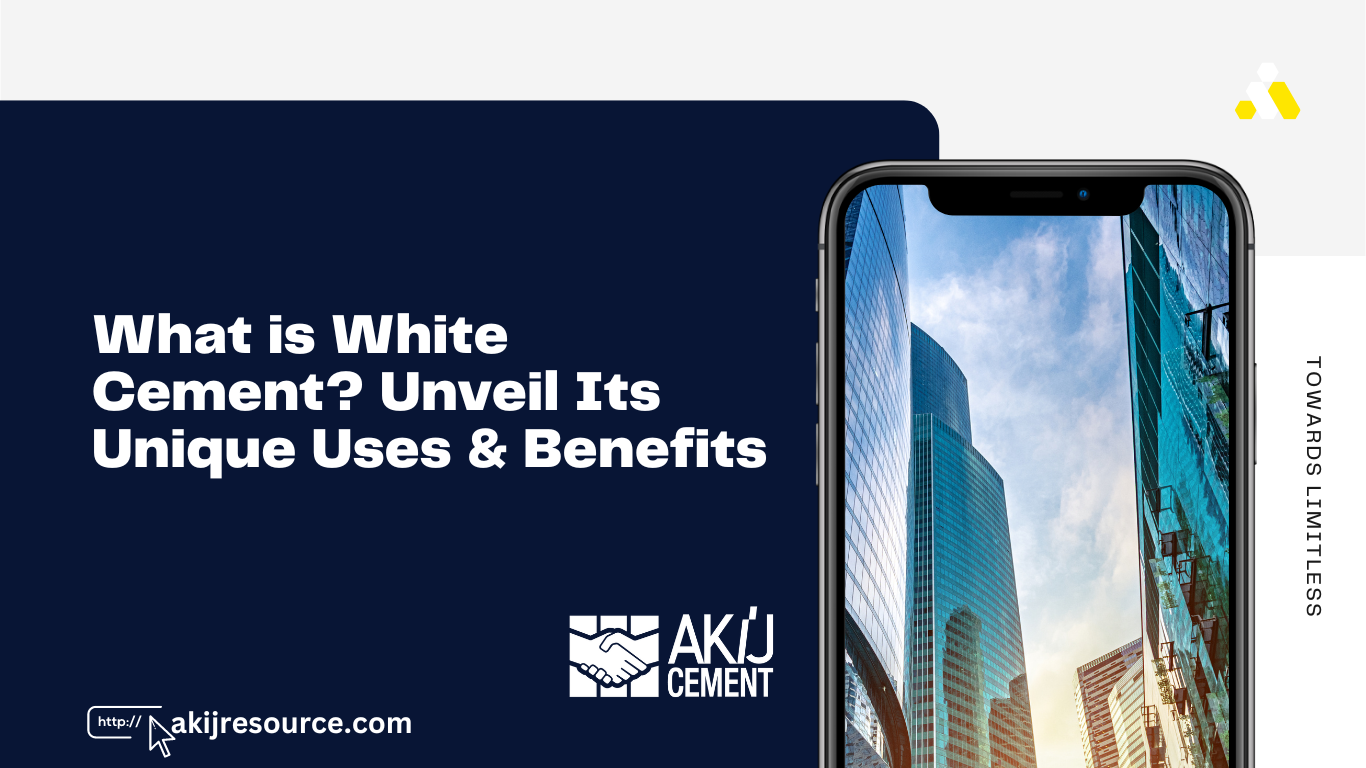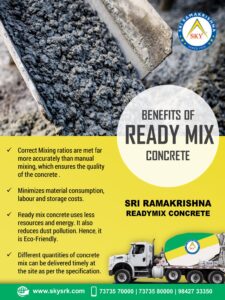White cement is a type of cement with a distinct white color. It is made from raw materials with low iron content.
White cement is highly prized for its aesthetic appeal and versatile applications. It is commonly used in architectural projects where a clean and bright finish is essential. This type of cement is made from raw materials with low iron oxide, ensuring its distinctive white color.
Its unique properties make it ideal for decorative work, including sculptures, monuments, and luxury interiors. White cement can also enhance the beauty of tiles, terrazzo flooring, and other construction elements. Its reflective qualities contribute to cooler building surfaces, offering energy efficiency benefits. Due to its specialized production process, white cement tends to be more expensive than ordinary Portland cement.
Introduction To White Cement
White cement is a versatile and essential building material. It offers aesthetic appeal and structural integrity. It is known for its bright white color. This makes it a popular choice for decorative and architectural projects.
The Basics Of White Cement
White cement is made from raw materials with low iron and magnesium. These ingredients give the cement its white color. It undergoes a different manufacturing process compared to gray cement.
The clinker used in white cement is free from metallic impurities. This ensures the cement remains white. White cement is often used for aesthetic purposes. It is ideal for creating sleek, modern designs.
Comparison With Traditional Gray Cement
| Feature | White Cement | Gray Cement |
|---|---|---|
| Color | Bright White | Gray |
| Composition | Low Iron and Magnesium | Higher Iron and Magnesium |
| Usage | Decorative and Architectural | General Construction |
| Cost | Higher | Lower |
White cement costs more than gray cement. This is due to the complex manufacturing process. It is used for projects where appearance is crucial. Gray cement is used for most construction projects. It is less expensive and widely available.

Credit: www.homedit.com
Key Ingredients Of White Cement
White cement is a versatile building material known for its aesthetic appeal and durability. It is made from carefully selected ingredients that result in its unique properties. Understanding these key ingredients helps in appreciating the quality and functionality of white cement.
Raw Materials In White Cement
The primary raw materials used in white cement include limestone, kaolin, and sand. Each of these materials is chosen for its purity and low levels of impurities. This ensures the final product is bright and consistent in color.
| Raw Material | Purpose |
|---|---|
| Limestone | Main source of calcium carbonate |
| Kaolin | Provides alumina and silica |
| Sand | Acts as a filler and helps in the formation of clinker |
The Role Of Iron And Manganese
Iron and manganese play a crucial role in the production of white cement. These elements are typically present in very low concentrations to maintain the whiteness of the cement. High levels of iron or manganese can give the cement a gray or brownish tint.
- Iron: Used in minimal amounts to prevent discoloration.
- Manganese: Kept to low levels to maintain the cement’s white color.
The careful control of iron and manganese levels ensures the cement remains white and aesthetically pleasing. This attention to detail sets white cement apart from other types of cement.
Manufacturing Process
The manufacturing process of white cement is complex and requires precision. This process ensures the cement’s unique whiteness and high quality. Below, we delve into the essential steps and quality control measures involved in producing white cement.
Steps In Production
The production of white cement involves several critical steps:
- Raw Material Selection: High-purity limestone and kaolin clay are the primary materials. These materials are free of iron oxides and other impurities.
- Crushing and Grinding: The raw materials are crushed and ground into fine powder. This powder is called “raw meal”.
- Pre-heating: The raw meal is pre-heated in preheater towers. This reduces moisture content and prepares it for the kiln.
- Clinkerization: The raw meal is heated in a rotary kiln at high temperatures. This creates clinkers, which are small, hard nodules.
- Cooling: The clinkers are rapidly cooled using air. This process helps maintain their chemical properties.
- Grinding: The cooled clinkers are ground with gypsum to create fine white cement powder.
- Packing: The finished cement is packed in bags or bulk containers for distribution.
Quality Control Measures
Ensuring the quality of white cement is crucial. Several measures are in place:
- Raw Material Testing: Each batch of raw materials is tested for purity and composition. This ensures consistency.
- Process Monitoring: Advanced sensors and control systems monitor each step. They ensure optimal conditions are maintained throughout production.
- Clinker Testing: Clinkers are tested for chemical and physical properties. This ensures they meet the required standards.
- Final Product Testing: The finished cement undergoes rigorous testing. This includes tests for whiteness, strength, and setting time.
- Quality Audits: Regular audits are conducted to ensure compliance with industry standards. This guarantees the consistency and reliability of the final product.
In summary, the manufacturing process of white cement is detailed and thorough. Each step is crucial in producing high-quality white cement.
Characteristics Of White Cement
White cement is a key material in many construction projects. It is known for its unique properties that make it stand out. These characteristics are crucial for achieving high-quality results in various applications.
Color And Texture
White cement is famous for its pure white color. This color is achieved by using raw materials that are low in iron and magnesium. The bright white hue makes it ideal for decorative works and aesthetic purposes.
The texture of white cement is smooth and fine. This texture allows for a refined finish in applications like plastering and tile grouting.
Strength And Durability
White cement is not just about looks; it is also strong and durable. It has a high compressive strength, similar to ordinary gray cement. This ensures that structures made with white cement are robust and long-lasting.
Its durability makes it suitable for both interior and exterior applications. White cement can withstand harsh weather conditions without losing its color or strength.
| Characteristics | Description |
|---|---|
| Color | Pure white |
| Texture | Smooth and fine |
| Strength | High compressive strength |
| Durability | Long-lasting in various conditions |
- Pure white color for aesthetic appeal
- Smooth texture for refined finishes
- High strength for robust structures
- Durable under harsh conditions
Creative Uses In Construction
White cement is a versatile material that offers numerous creative possibilities in construction. Its bright color and smooth texture make it ideal for various innovative applications. From stunning architectural projects to intricate decorative elements, white cement can transform any space.
Architectural Applications
White cement is widely used in modern architecture due to its aesthetic appeal. Its reflective properties help keep buildings cool and energy-efficient. Here are some common architectural uses:
- Facade treatments: White cement creates sleek and elegant building exteriors.
- Precast panels: These panels offer durability and a uniform appearance.
- Cladding: White cement cladding adds a sophisticated touch to any structure.
Architects also prefer white cement for structural elements like beams and columns. Its high strength and durability ensure long-lasting performance.
Decorative Possibilities
White cement is perfect for decorative elements. It can be molded into various shapes and designs. Here are some popular decorative uses:
- Flooring: White cement floors provide a clean and modern look.
- Sculptures: Artists use white cement for its smooth finish and workability.
- Mosaics: White cement serves as a base for colorful mosaic patterns.
In addition to these, white cement is ideal for creating decorative facades and ornamental details. Its versatility allows for endless design possibilities.
White cement also offers benefits such as resistance to discoloration and weathering. This makes it suitable for both indoor and outdoor applications.
White Cement In Artistic Creations
White cement is a versatile material used in many artistic creations. Its bright, neutral color makes it perfect for artwork and sculptures. Artists and designers love its smooth texture and ability to reflect light. This helps in creating stunning visual effects. Let’s explore how white cement is used in different forms of artistic expression.
Sculptures And Installations
White cement is a favorite for making sculptures and installations. Its fine texture allows for detailed work. Artists can carve intricate designs and patterns. The bright white color helps in making the sculptures stand out. It also allows for easy painting, giving more options for customization.
White cement sculptures are often used in public spaces. They add beauty and elegance to parks and buildings. Art installations made from white cement can be found in galleries and exhibitions. These installations often become focal points, drawing attention and admiration.
Crafting Unique Finishes
White cement is ideal for crafting unique finishes in interior and exterior designs. It can be used to create smooth, polished surfaces or textured, rustic looks. Designers use it to make walls, floors, and ceilings look special. The versatility of white cement allows for endless creativity.
Here are some ways white cement is used in finishes:
- Polished surfaces: Creates a sleek, modern look.
- Textured finishes: Adds depth and character to surfaces.
- Stained finishes: Allows for color customization and artistic effects.
White cement can be mixed with pigments to create different colors. This adds another layer of creativity for designers and artists. The result is a unique and personalized space that stands out.
Advantages Of White Cement
White cement offers many benefits. It is more than just a construction material. This type of cement can transform spaces and provide lasting value.
Aesthetic Appeal
White cement is known for its brilliant color. It provides a clean and modern look. Buildings and structures made with white cement stand out. The bright finish makes them unique.
This cement can be used for decorative finishes. It is perfect for architectural designs. It allows for creative and intricate patterns. The final result is always stunning.
Reflectivity And Energy Efficiency
White cement has high reflective properties. This means it reflects more light. It helps keep buildings cooler. This can lead to energy savings on cooling costs.
Using white cement can reduce the need for artificial lighting. Natural light is better utilized. This makes spaces brighter and more inviting. It is an eco-friendly choice for modern constructions.
Practical Tips For Working With White Cement
White cement is a versatile and attractive building material. It offers a clean and polished look to various projects. To make the most of its benefits, it’s important to follow some practical tips. Below, we’ll cover essential guidelines for mixing and applying white cement.
Mixing Guidelines
Proper mixing is crucial for the best results. Use clean tools and equipment. This prevents contamination and ensures a pure white finish.
- Use a clean bucket: Avoid any residual materials from previous mixes.
- Measure accurately: Use a consistent ratio of water to cement. Typically, a 1:2 ratio (one part cement to two parts sand) works well.
- Add water gradually: Start with a small amount of water. Mix thoroughly and add more if needed.
- Mix until smooth: Ensure there are no lumps in the mixture.
| Step | Action |
|---|---|
| 1 | Clean the tools and bucket |
| 2 | Measure the cement and sand |
| 3 | Add water gradually |
| 4 | Mix until smooth |
Application Techniques
Applying white cement requires precision. Follow these techniques for a flawless finish.
- Prepare the surface: Ensure it’s clean and free from dust and grease. This helps the cement adhere better.
- Use a trowel: Apply the cement evenly with a trowel. This ensures a smooth surface.
- Layer thinly: Thin layers dry faster and reduce the risk of cracking.
- Keep it moist: Mist the surface with water. This prevents quick drying and cracking.
By following these mixing and application tips, you can achieve beautiful and durable results with white cement.
Future Of White Cement
The future of white cement looks bright. Innovations and sustainability are driving the industry forward. White cement is not just for aesthetics. It has many uses in modern construction.
Innovations In The Industry
New technologies are enhancing white cement production. Nanotechnology improves the strength and durability of white cement. 3D printing with white cement is becoming more popular. It allows for unique designs and structures.
Researchers are creating self-healing white cement. This cement can repair its own cracks. This will increase the lifespan of buildings. Smart white cement is also in development. It can change color based on temperature or light.
Sustainable Practices
Environmental concerns are shaping the white cement industry. Recycled materials are now used in production. This reduces waste and conserves resources. Energy-efficient kilns are being adopted. They lower carbon emissions during the manufacturing process.
Alternative fuels like biomass are replacing traditional fuels. This helps in reducing the carbon footprint. Water conservation techniques are also being implemented. This ensures that water usage is minimized during production.
| Innovations | Sustainable Practices |
|---|---|
| Nanotechnology | Recycled materials |
| 3D printing | Energy-efficient kilns |
| Self-healing cement | Alternative fuels |
| Smart cement | Water conservation |

Credit: www.homedepot.com

Credit: civiltoday.com
Frequently Asked Questions
What Is White Cement Used For?
White cement is used for decorative works, repairing marble, terrazzo flooring, and architectural finishes. Its high whiteness enhances aesthetics.
What Is The Difference Between Cement And White Cement?
Cement is gray and used for general construction. White cement is white, more refined, and used for decorative purposes.
Can I Use White Cement As Normal Cement?
White cement can be used like normal cement but is more expensive. It’s ideal for decorative purposes due to its color.
What Is Another Name For White Cement?
Another name for white cement is “white Portland cement. ” This cement is known for its bright, white color.
Conclusion
White cement offers versatility and aesthetic appeal in construction projects. Its unique properties enhance architectural designs. Using white cement can elevate the appearance of your structures. Consider incorporating it into your next project for a cleaner, brighter finish. Explore the benefits of white cement and transform your construction outcomes with its superior qualities.






